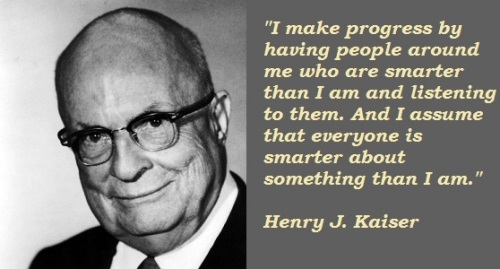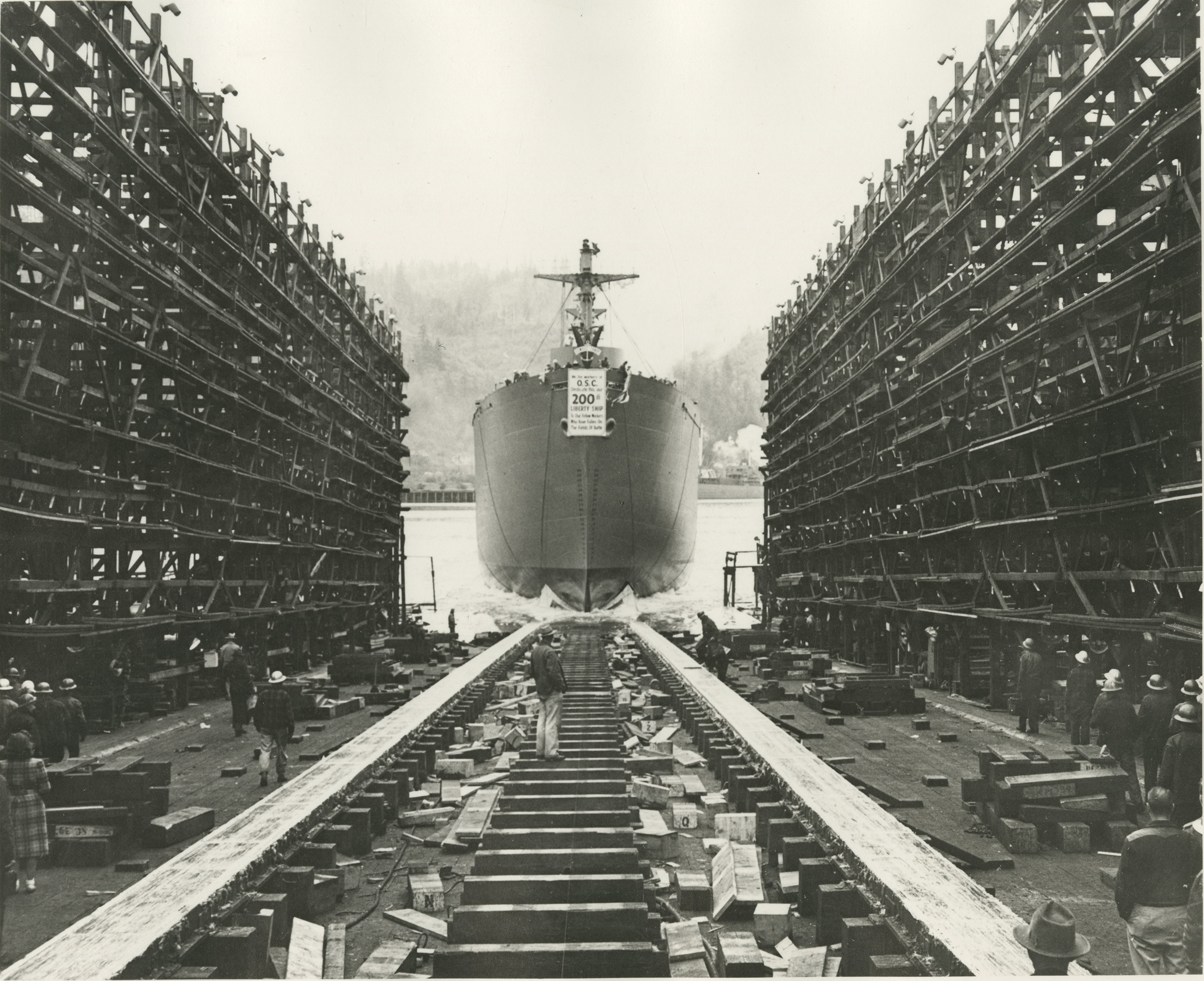At the end of WW2, America had about 6,000 merchant ships. Today it has about 100.
Merchant ships are the lifeblood of international trade and commerce and even more so to island nations like England, Australia and New Zealand. They are also vital to the well-being of otherwise self-sufficient nations like the USA and Canada.
In 1941, England was the victim of an all-out drive by Germany to deprive Britain of its lifeblood of imports without which it could not feed its people. In a speech in 1940 Winston Churchill magnified the extent of this danger when he said that at any given moment 2,000 British merchant ships are in transit on the high seas. The losses of ships sunk by German submarines was huge and Churchill appealed to America for help. In 1941 alone Britain lost 1,300 ships sunk by German U-Boats.
President Roosevelt was sympathetic and supportive of Churchill’s request but he had no ships to spare. On top of that American shipyards were too few and too busy to be able to help. Churchill offered to pay for the creation of new shipyards in America, safe from German air attacks. The President warmed to this proposal and turned to another giant of American industry, Henry Kaiser.
Unlike Bill Knudsen, Kaiser was a self-made uneducated man. Un-educated in the sense that he was not a brilliant scholar. Kaiser left school and skipped town at age 13. Ten years later he was running his own construction company. His great achievement was the construction of the Hoover Dam, one of the greatest engineering achievements ever at that time. He had a talent for organisation built on the back of fierce determination and nous.
Kaiser offered to build shipyards and then ships. He had limited experience in both having been part of a joint venture building ships for the Maritime Commission in the 1930’s.. Kaiser met with the British with a design of what became the Liberty Ship. It was called an “ugly duckling”. It was basic, austere, and uncomfortable but it had large cargo capacity and was easy to build. The British, who claimed to be the world’s greatest shipbuilders, were sceptical but after Kaiser assured them he could they awarded him the contract but it had to be done his way.
Kaiser bought land on the mudflats at Richmond on San Francisco Bay. He was told by consulting engineers that it would take 6 months to dredge the channel and clear enough land to start construction of his shipyard. Kaiser’s team did it in 3 weeks and in 3 months had constructed their first shipyard.
Kaiser based his production techniques on the Ford Motor Company production line model. Instead of building one ship at a time he built sips in sections with several identical sections being built at the same time then joining the sections by welding instead of rivets. A riveter takes 6 months to train. A welder takes two days.
Kaiser’s shipbuilding programme was for a contract to build ships for Britain before Japan attacked Pearl Harbour. Once the mobilisation of American industry was launched President Roosevelt saw how efficient the Kaiser model was and decreed that construction of warships by the Navy would cease and be handed over to private industry. Kaiser expanded his ship building and ended up with seven shipyards of which four were at Richmond.
Kaiser secured many more contracts which, in turn required more workers. People previously unemployed from all over the country are attracted to the shipyards and as Richmond is far from the usual township facilities Kaiser decides to create his own for the benefit of his workers and offers pay rates comparable to what could be earned working in an aircraft factory in or near a big city.
His first benefit was to provide health care at a cost of 18 cents per week to cover all medical and health care costs. 91% of his workers subscribed making it the largest health care scheme in the USA at the time. Next he created a Health Care company and franchised it out to health care specialists and insurance companies.

Workers flocked from all over the country to join the Kaiser shipyards and by 1943 Richmond had grown into a town of 150,000.Kaiser then embarked on the construction of 93,000 new homes to accommodate the exploding work force. With it he created all of the necessary infrastructure to become a town where people wanted to live. As well as transport he constructed shops, cafes, picture theatres and sporting facilities all open on a 24 hour basis to cater for shift workers.
25% of the shipyard workers were women. To cater for the large number of young families Kaiser built schools, kindergartens and child minding centres with qualified staff so that the mothers could be content at work knowing that their children were being well looked after. In 1933 only 50,000 were employed in shipyards. By 1943 there were 1,700,000.
At the beginning of 1942 a Liberty ship was taking 210 days to construct. By May this was down to 156 days. By July this had come down, on average to 15 days with one being completed in 2 days. Before the war it was taking the US navy shipyards 18 months to complete a Liberty ship type of cargo vessel. Kaiser now had shipyards all around the country and was being feted as a national hero.

Oregon Shipbuilding Corp., 1943. Courtesy Oregon Hist. Soc. Research Lib., Orhi68566
At the start of the war America had only 6 Gato Class submarines. These were the long range submarines that could reach the home waters and shipping channels of Japan. They were complicated and very slow to build. America wanted to do to Japan what Germany had done to Britain, i.e., cut off their supply of vital goods. American shipyards got together and developed production line techniques to build more Gatos. By adopting Kaiser’s methods a new submarine fleet was under construction and by 1944 a new submarine was being launched every 8 days; a far cry from the old US Navy shipyard output. The Gato was America’s first mass produced submarine.
Submarines represented 2% of the US. Navy fleet but they accounted for 30% of all Japanese ships sunk.
Kaiser’s next project was the design and construction of the escort aircraft carrier known as the Casablanca Class. This was a small simple fast moving aircraft carrier that could carry 20 planes and take a few weeks to build using his methods. A conventional aircraft carrier carried 60 or 70 planes and took 3 years to build. There was no time to wait for this. Kaiser met with the Navy board which gave him short shift so he went directly to the President. The President over rode the Navy Board and gave Kaiser a contract to build 50 escort carriers. He undertook to deliver 6 carriers per month and stuck to his deadline. The destruction of the Japanese fleet by the US Navy was achieved by aircraft launched from escort carriers. There were more Casablanca Class ships built than any other class of aircraft carrier on either side during the war.
In 1943 Japan produced 122 major naval vessels. America built 2,634 in the same period.
Despite the outstanding achievements of aircraft and shipbuilding manufacturers American losses on the battle front during Admiral Nimitz’s island hopping strategy were heavy. This was due to the type of landing craft being used which were heavy, slow and did not have shallow draft. Once beached in water too shallow to proceed but too deep for troops to disembark the landing craft were sitting ducks to be picked off by shore based gunfire.
A solution was submitted to the Navy board by a man named Andrew Higgins. Higgins worked in Louisiana servicing offshore oil rigs with a boat of his design. It was fast, highly maneuverable and had very shallow draft. His proposal was rejected by the Navy Board which insisted on retaining the current type of landing craft which it had designed.
Not to be deterred, like Kaiser, Higgins went to see Senator Harry Truman who was on the far right of the Democratic Party and well disposed towards private industry. Truman launched a senate inquiry into the Navy Board which resulted in the Navy Board being sacked and Higgins being awarded a contract to mass produce his boat.
In June, 1944 the US Navy invaded the Marianas using the Higgins boat using the biggest fleet ever assembled to that time. It was an overwhelming success but there were limitations evident in the ability to land heavy equipment such as tanks, artillery and trucks. Kaiser again entered the picture.
Kaiser’s solution was the invention of the LST, the Landing Ship Tank. The LST was designed in Britain but it was manufactured in the USA by Kaiser shipyards. The LST was designed to carry 20 tanks, 27 vehicles and 200 men.
In April, 1945 the US Navy assembled the largest fleet and landing force of the Pacific war when it invaded Okinawa. Over 1,400 ships were involved of which there were hundreds of LST and Higgins landing craft. This was the last great assault of WW2. Four months later the atomic bomb was dropped on Hiroshima and nine days later the war was ended.
The story of the development and production of the atomic bomb has been comprehensively described in my recent article “Hiroshima” so I will not repeat it here. It is suffice to say that this was another example of the superiority of American private industry and enterprise being given a free hand and high level government support to get on with the job by people who really knew what they were doing. There was no muddling through to pay homage to a class system like pervaded British industry. The “can-do” attitude and the refusal to accept that nothing was impossible propelled American industry to heights never dreamed of in 1939.
In 1941, the US Navy consisted of 17 battleships, 8 aircraft carriers, 112 submarines, 653 fighting ships of other classes and no amphibious vehicles. A total of 790. At the end of the war the US Navy was bigger than the British Navy. It had 23 battleships, 99 aircraft carriers, 232 submarines, 2,547 amphibious vehicles and 4,065 ships of other classes. These were the survivors. On top of that, American shipyards also produced the hundreds of ships lost in battle. The US Navy accounted for 70% of the total naval forces of the entire planet.
At the war’s end, Kaiser's shipyards at Richmond, Fairfield and Bethlehem were shut down. Their task was complete. Although the US Navy today is a mere shadow of what it was in 1945 it is still the dominant naval force of the world. The feats of American industry in WW2 placed America in a position of world dominance and leadership that it never aspired to but circumstances and need overcame that lack of ambition.
The advances in industrial production and method developed during WW2 were not to be discarded. They carried over into the peacetime economies and in the field of civilian aircraft production American industry reigned supreme.
The legacies left by these industrial Titans after the war were mixed. Knudsen did not have a private corporation. He was an employed senior executive working for major corporations and died in 1947 leaving only his personal fortune.
Kaiser, on the other hand was the opposite. His interests expanded into other fields and his name still features prominently via Kaiser Steel Corporation and Kaiser Aluminium. His policy of acquiring or creating vertically integrated businesses lead him from one industry to another. A little-known venture was his acquisition of Willys Overland in 1948 and the purchase of part of the Willow Run Ford factory where he began making the Kaiser Jeep for the US Army.
His greatest legacy however was his medical insurance company, Kaiser Permanente Health Care created for his Richmond shipyard workers and inaugurated within the Kaiser Foundation, a non-profit charitable foundation. It is the largest non-profit organisation in the US as at 31/12/2022.
Many household names of the commercial world owe their legacy to the drive of Knudsen and Kaiser during WW2. Names such as Lockheed, Douglas, Northrop, Curtis and Grumman were little companies before WW2. The systems that they developed have been exported as post-war reconstruction to Germany, Japan, and China forming the basis of the current industrial power of these countries.
The greatest legacy in my opinion should be credited to President Roosevelt. Here was a man who was a committed socialist and applied socialism to solving the depression. When war came and he was faced with reality he was big enough to face facts and discard his philosophies in favour of saving his nation by making a 180 degree turn in favour of private enterprise.
In contrast, the British industrial base has withered on the vine. Rather than learn from the American example, when Churchill was defeated at the elections in 1945 and succeeded by his lieutenant on the War Cabinet, Clement Atlee, Britain started on the downward path to socialism. This was accelerated by Wilson and a succession of Labour governments which nationalised all major industry to the point where it no longer exists. Once the mightiest shipbuilding nation in the world, Britain no longer produces any ships. Its famous brands of cars have all disappeared and the manufacture taken over by American and other foreign companies. The one remaining champion of British excellence is Rolls Royce but even that is now back to making only aircraft engines. Its famous cars are now a product of the German company BMW.
Here in Australia American products are still admired and universally popular but there is an underlying atmosphere of self-satisfaction when something adverse happens to America which I find irritating to put it mildly. There is an aura that when something bad happens to America, here there is a perverted sense of achievement in some quarters. I put it down to another branch of our “tall poppy syndrome”.

The reality is that since the end of WW2 the only thing that has stood between Communism and the life that most of the free world enjoys is America. Whether you like it or not that is a fact. If anyone doubts that then just ask yourself what would life be like if America decided to revert to its pre-war isolationist policies? Ask that of any unwashed university graduated latte sipping idiot or a rampant unionist who has the immediate solution to all of the world’s problems and the only response would be something stupid or simply “No appearance Your Worship”.
What would be the result if America withdrew from the UN and told it to remove its HQ to Switzerland? The untold generosity to every beleaguered nation on this planet has not been appreciated by most of them. I would be the first to concede that American diplomacy has failed. They are no good at that at all. What most people take granted is its boundless generosity all paid for by the American taxpayer.
There is not a lot Australia can do of any consequence materially but what we can do is to give America all the moral support that we can in its hour of need. America is now in the grip of heinous criminals and is in desperate need of moral support. The average American is not a coward. He respects the rule of law and for now that keeps him tolerant and overtly submissive but when the shell of the egg breaks it will not be a chicken that will emerge. It will be the American eagle in all of its pent-up fury the like of which we will see as a wake-up like we saw in 1941.
Whenever you hear that Kate Smith rendition of “God Bless America” thank God that you still have the freedom to deride it if you want to.
Here are the words to that song.
God bless America
Land that I love
Stand beside her and guide her
Thru the night with a light from above
From the mountains, to the prairies
To the oceans white with foam
God bless America
My home, sweet home
God bless America
My home, sweet home
God Bless America" is an American patriotic song written by Irving Berlin during World War I in 1918 and revised by him in the run up to World War II in 1938. This later version recorded by Kate became her signature song for the remainder of her career.
The full series is available here
https://patriotrealm.com/index.php/collections/god-bless-america-the-full-series
BLOG COMMENTS POWERED BY DISQUS
